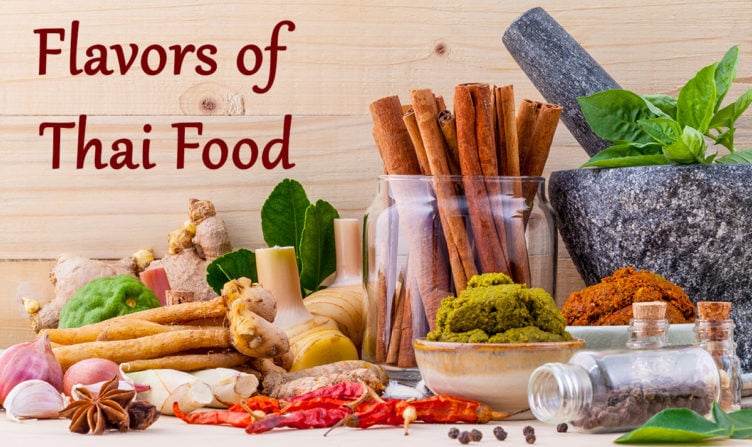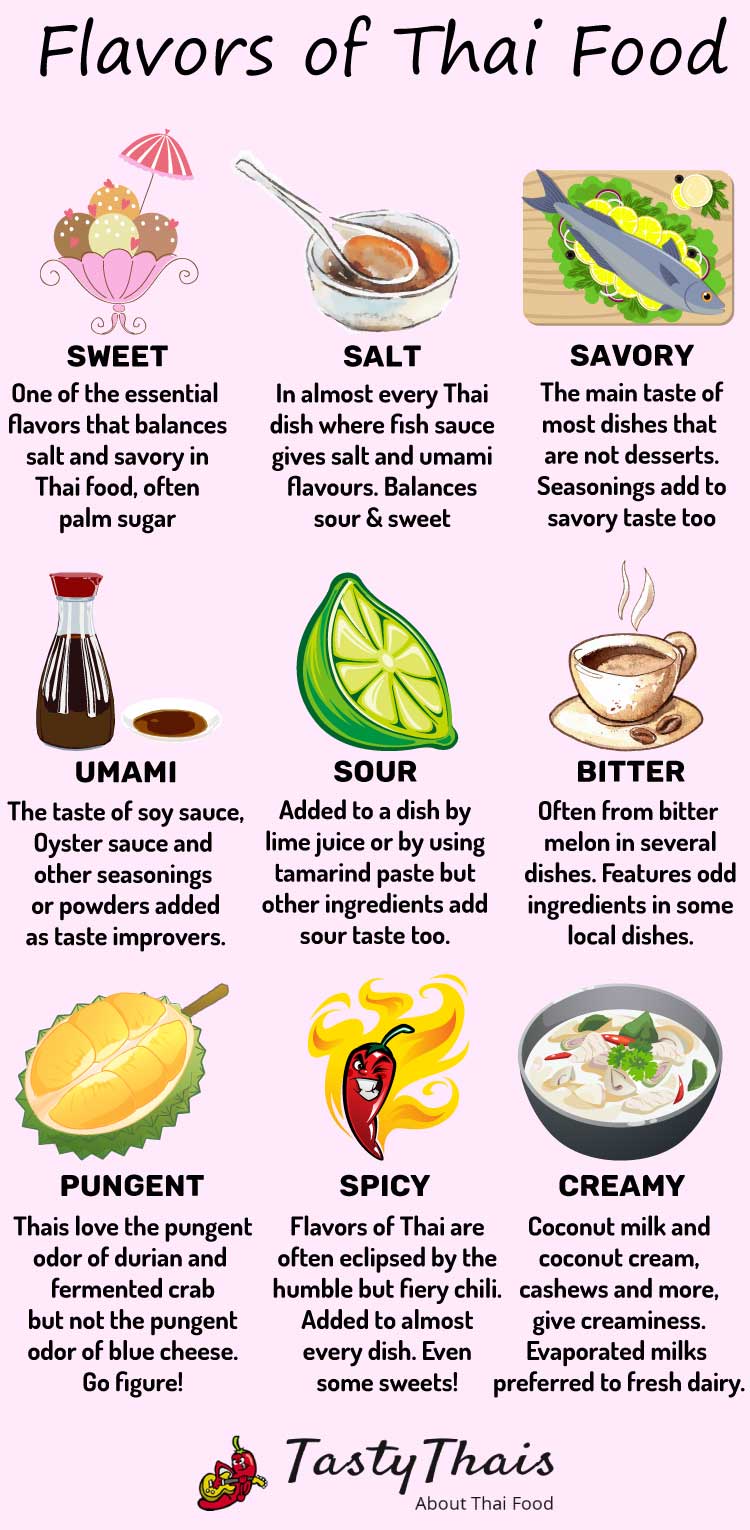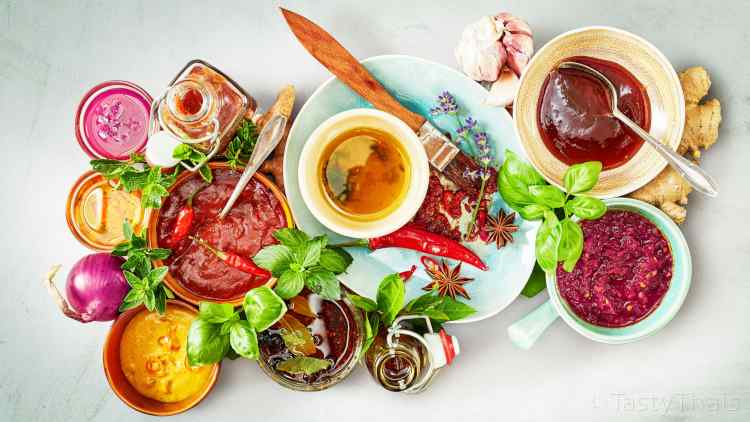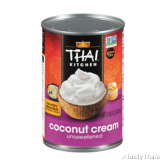The flavors of Thai food are at the center of what makes Thai cuisine so tasty and sought-after around the world. What are these mysterious Thai flavors and how do they help Thai food be so unique.

The secret to cooking Thai food is more than just throwing together a bunch of Asia specific vegetables, herbs, and spices and dousing them with the particular seasonings used to create the best of Thai food.
The secret lies in the flavors of Thai food and how they intermingle – more on that coming up!
What Makes Thai Food Unique?
What makes Thai food unique is the mix of spices, chili heat, herbs, sweetenings, seasonings, together with creamy, bitter, pungent, sour, and other Asian ingredients used to make Thai food impart a distinctive set of flavors.
Balancing these flavors and textures and combining them into the tastiest of Thai dishes is the skill of the chef or the cook and the quality of the recipe used.If you are looking to cook great Thai food, it’s a great help to understand how the Thai food ingredients all fit together.
If you’d like to get the low down on regional types of Thai dishes then head on over to our article called ‘What is Thai food?‘ for some more interesting information as well as our article on Thai cookware to see if there are any cooking tools you might need.
Thai Food Flavors and Tastes
You may have read that there are just five tastes that your taste buds can register, even some scientists argue it’s six or more but the reality is your perspective. A scientist will plump for five (though maybe not the same five), a cook might come up with more.
You instinctively know that there thousands of different flavors and that some foods are spicy and others not. The way we perceive flavor is not just through taste. In fact the flavor we experience is as unique to us as Thai food is unique amongst cuisines.

The Route to a Thai Taste Experience
It starts with the look of the food, then the smell it gives off so before the food ever hits our tongue we have an expectation delivered to our brains from our eyes and nose.
When the food gets into our mouth we feel its texture and the heat of spice like chili and whether it is hot or cold. Note that these are feelings more than tastes although chili has taste as well as heat!
Then our taste buds decipher the sweet, sour, salt, savory, and bitterness of the food – a guard against us eating poisonous stuff.
To the man, woman or child in the street though we tend to experience the blend of what we see, what we smell, and how the food feels in our mouth which we call texture (including creaminess and fattiness); feelings of temperature, spice heat, and potentially pungent (eye-watering) effects and maybe even metallicness (especially with wine) are added along with the five basic tastes and we describe the whole experience as ‘taste’.
That taste will be somewhat unique to each individual – someone with a cold, who is hungry or thirsty, on medication or sick, or simply unused to the taste experience will all experience something different.
So for Thais, the actual taste of the food is only part of the story. How the dish looks, the smells from it and that surround it, and the pleasantness of how it is served all play their part.
There are some dishes that just do not look good unless you are anticipating the taste – Som Tam Poo Bala immediately springs to mind.
How Ordinary People Describe Taste
To us, unique citizens of the world, we can separate our taste experience into its parts.
For the purpose of cooking Thai food and the ingredients used to produce that unique taste of Thai, it is helpful to separate the tastes into the following categories for useful insights.
The multiplex ‘flavors’ of Thai Food are 1. Sweet (too many sweet things to mention), 2. Salt (often from fish sauce), 3. Savory (as in meats & cheese), 4. Umami (similar to savory but tangy at the same time – like marmite or vegemite on toast), 5. Sour (lime juice and tamarind), 6. Bitter (bitter gourd), 7. Pungent (fermented fish – bala), 8. Spicy (heat like chili), 9. Creamy (fat – like coconut soups).We acknowledge that these categories are not exactly scientific but they are more complex descriptors of how we experience how food tastes.

Add on to these the experience of what food looks like and it’s temperature and you will have sufficient words to describe Thai flavors.
The Individual Flavors of Thai Food with Ingredient Examples
1. Sweet
Sweetness comes predominantly from sugar in the form of palm sugar, coconut sugar and honey. In contrast to the refined white sugars of western cuisines that have little taste beyond sweet – palm sugar and coconut sugar each adds their own taste profile to the dish.
In addition, Thais use brown crystalline sugar (demerara) in cooking, baking and for drinks which adds a slight caramel taste.
Soft brown sugar is also used, though much less often than palm and coconut sugars. It main use is in baking but also to add depth to a dish as well as sweetness, that depth coming from the mild taste of molasses.
Stevia leaf is used in some Thai herbal type drinks to add sweetness but also has a mild but noticeable taste if overused.
Dark brown sugar is not used very extensively at all in Thai kitchens.
Palm sugar gives better flavor than cane or refined sugars - best for Thai dishes.
2. Salt
Salt very often is added through fish sauce which also has an umami flavor which is less strong than some other seasonings.
As well as this coarse grain salt is used in dishes where moist ingredients are pounded as the grains help give abrasion to make the pounding process easier as well as adding salt to the dish.
Salt is also a common ingredient in many other seasonings that are used such as oyster and mushroom sauce, pork and chicken seasoning powders and so on.
Salt is used to add both saltiness as well as to counterbalance bitterness or over sweetness – but there are limits. The reverse is also true if a dish is too salty.
Did I mention fish sauce?
You had better get used to it because it’s in so many dishes. And even though fish sauce smells a bit fishy smelled from the bottle, that smell does dissipate with cooking.
3. Savory
The savory tastes mostly come from the main protein ingredient whether fish, shellfish or meat. The taste is then augmented by seasoning pastes, powders and sauces added to the dish.
Thai cooking makes extensive use of seasonings in their dishes in the form of pastes, sauces and powders so you will need to grab a few for your pantry.
A reasonable quality Thai Oyster Sauce used for seasoning may Thai dishes.
4. Umami
Umami is often conjoined with the term savory but we make no apologies for having a slightly different opinion.
Umami may well be a savory taste but it also combines a sort of tangy, slightly off sort of quality like marmite or vegemite, truffles, blue cheese or sauces like Shoyu (a type of soy sauce). It combines those two qualities to make it somewhat different to simply savory.
To some degree rice wine (Shaoxing) or other cooking wines also add umami flavor.
Light soy sauce can be used for a gentler umami flavor if that is your desired taste profile.
5. Sour
One of the most important concepts to learn early is the importance of the sweet sour balance of a Thai dish.
Lime juice is probably the most common ingredient used to add sourness. But white vinegar is also commonly used as well as tamarind for a more fruity sourness.
Kaffir lime leaves and lemongrass, as well as lemon basil, add a more restrained sourness as well, especially if the kaffir lime leaves are sliced finely to eat.
This is the exact brand we use at home and in our published recipes. Lasts long if you refrigerate too.
6. Bitter
The most common bitter ingredients are Okra and bitter melon which is also called bitter gourd.
Rural Thais also eat a fair amount of animal offal such as the bile ducts of beef as well as crickets worms and beetles. But since these are in none of the recipes we are ever likely to present, let’s skip over those, shall we?
7. Pungent
Thais seem to love all things smelly as long as that is not YOU!
Durian & Som Tam Poo Bala are two grandstanding examples – Poo Bala being months old fermented crab that smells as bad as the drains here. Poo means ‘crab’ in Thai by the way which may be somewhat ironic?
There are a number of other pungent ingredients that feature such as various fermented vegetables, prik pow paste which is made from dried shrimp and so on.
Whilst pungent means either strong-smelling or strong tasting, most strong tasting things are usually quite strong smelling too.
If you know of an ingredient that is strong tasting without a strong smell then do let me know in the comments below.
Thai chili paste - an essential Thai ingredient which will be used often and lasts well refrigerated.
8. Spicy
The spice heat in Thai dishes is, unsurprisingly, chili and the pastes derived from chili.
But there are other ingredients such as green peppercorns cooked on the stems, black pepper, garlic, and more particularly ginger.
These ingredients add to the taste, though chili peppers are more spicy hot than full of taste.
Spice can also be added by sauce seasonings such as tabasco, chili oil, chili paste and others but as you can see these are mostly chili derivatives.
Dried chilies used more for decoration and aroma than giving much taste. Sill essential though.
9. Creamy
There has been some noise in scientific circles about the ability of humans to taste fat – and here we are talking about taste scientifically.
Well never mind scientifically, you can taste whether a dish is creamy or not and I am sure you don’t need a scientist to verify that for you.
Since Thais do very little with dairy cream beyond decorations for ice cream (and we’re not sure that is very dairy at heart but anyway), most creaminess comes from coconut cream and coconut milk.
If you are a Thai food lover then you will surely have tasted the creamy soups like Authentic Tom Kha Gai and curries like Thai coconut curry with chicken.
The fact is many Thais do like cream but prefer the cream from coconut. Most dairy cream consumed comes from evaporated milk and condensed milk which is very extensively used.
Coconut cream for our creamy sweet and spicy curries and a whole lot more.
So you guys in the West can enjoy life with your scientific four, five or six tastes – seven if you really push it – but we are very happily smug with our delicious food with its NINE wonderful flavors of Thai food.
So there you have it – Thai food mysteries explained.
Once understood you will be well on your way yo making your own Thai masterpieces served up with some delicious sticky rice or fresh steamed jasmine rice which was given to the world by our Maker to eat with Thai food.






